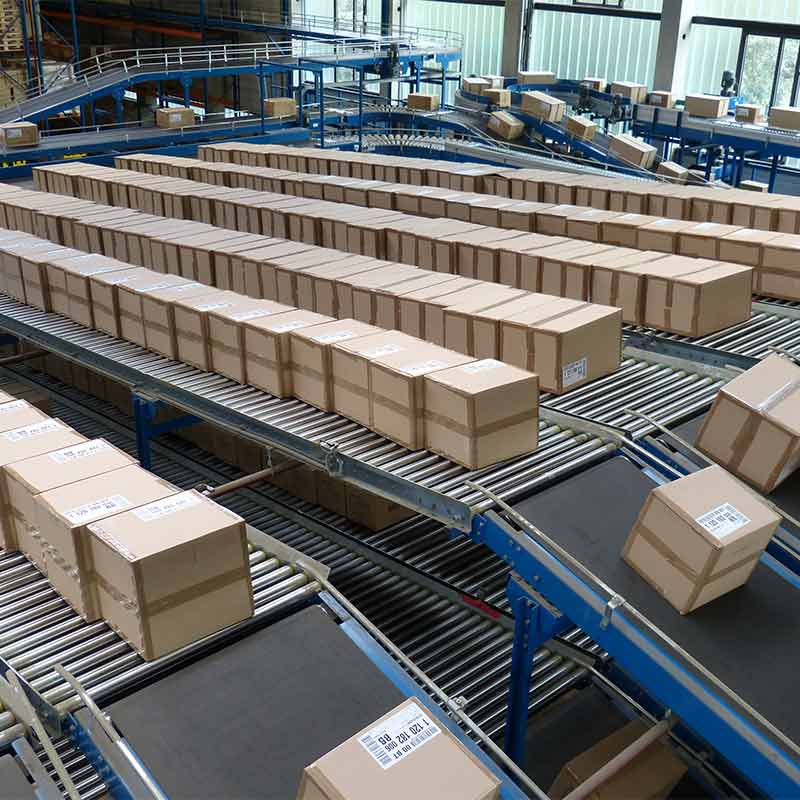Build a business plan 101: identify data

Identify the data to be collected
Identifying the correct data and its availability may be the most challenging part of developing your business case. Some drivers, such as Cost Savings, are tangible and have relatively straightforward data, while others — like Brand Reputation — are a bit more intangible. In this step, we’ll outline some of the more common tangible datasets to be collected or developed.
There are two main types of quantifiable, or tangible data to collect:
- Financial data (revenues and expenses).
- Environmental impact data.

1. Financial data
Financial data may be quantifiable — but that doesn’t mean it’s readily available. You may have to reach out to others to obtain it. For each piece of financial data, revisit your list of internal stakeholders to understand who owns the data, and think about how you might be able to gather it.
Financial data may include:
- Sales.
- Operational costs.
- Fines, penalties, and taxes.
- Capital expenditures.
- Research and development.

2. Environmental data
This can be less straightforward than financial data. Your company may or may not be keeping track of its greenhouse gas emissions, for example. In that case, you may need to back into the calculation.
For example, to calculate your greenhouse gas emissions in your facilities, you’d first need to know the amount of electricity used, and the energy mix you have for creating that electricity. Is it nuclear? Coal? Renewable?
Each energy source comes with its own GHG emissions footprint. If you’re able to collect those data points, you’d be able to estimate your GHG emissions.
Environmental impact data may include:
- Tons of greenhouse gases emitted.
- Gallons of water used.
- Pounds of chemicals reduced.
- Tons of waste.
- Acres of land cleared.
- Pounds of fertilizer used.
Discovering the data for your environmental impact can be a time-consuming process. You’ll need to determine how crucial some of the more challenging environmental impact data points are to your business case. You may feel that you’ll be able to make a strong case using only financial data. If you feel that this data is necessary to make your case, it may be helpful to seek out a consulting firm that specializes in environmental accounting.
External consultants are available to help you with this step.
If you want to keep it in-house, there are many existing frameworks you may want to get acquainted with for quantifying your environmental impact:
- Natural Capital Coalition and its protocol document.
- GHG Protocol.
- EcoLab Water Risk Monitor Tool.
- Quantis Land Use Change guidance.
TOOL: identifying financial and environmental data and owners
For each priority driver of change, identify the financial and environmental impact data to be collected, as well as the owners of that data.
| Priority Driver of Change | Financial Data Needed | Environmental Impact Data Needed | Data Owner |
|---|---|---|---|

Assigning financial and environmental impact to drivers
Below are sample data tables for the common drivers we discussed earlier. Referring to the tables from this earlier step, the next step is to add in the financial and environmental impact components:
TOOL: Estimate benefits
The total amount of money saved from these operational efficiencies may be of great benefit in making your business case. Depending on your needs and available data, these can be back-of-the-envelope estimations, or in-depth calculations. Cost per kilowatt hour of electricity, gallon of gasoline, ton of waste, or gallon of water might be obtained from your Operations Department.
| Operational Efficiency | Cost Per Unit | Environmental Cost Per Unit | # of Units Saved | Amount Saved |
|---|---|---|---|---|
Download and fill in the chart
TOOL: Estimate revenue increase from new market opportunities
| New Product or Service | New Market Served | Potential Revenue Increase |
|---|---|---|
| New Customer Segment | Description of Customer Segment’s Purchasing Power | Potential Revenue Increase |
|---|---|---|
| Lifestyle of health and sustainability consumer services. | LOHAS consumers represent one in four adult Americans and an estimated $290 billion in U.S. spending power for goods and services. | |
Download and fill in the charts
TOOL: Estimate revenue increase or cost savings from enhanced brand reputation
| Aspect of Sustainability Plan | Business Stakeholder Type | Associated Benefits, Costs, Opportunities, and Risks | Estimated Cost Savings or Increased Revenue |
|---|---|---|---|
Download and fill in the chart
Performing a cost-benefit analysis
You can bring together the work you’ve done thus far to include into a cost-benefit analysis. This analysis will help you see the opportunities you have for effectively communicating the business case to stakeholders that are primarily interested in the numbers.
| Cost-benefit Analysis Template Sustainability plan: insert description here | ||||||
|---|---|---|---|---|---|---|
| Quantitative Costs | Year 1 ($) | Year 2 ($) | Year 3 ($) | Year 4 ($) | Year 5 ($) | Total |
| Solar panel installations | ||||||
| Electricity | ||||||
| Water | ||||||
| Fuel | ||||||
| Total Costs | ||||||
| Quantitative Costs | Year 1 ($) | Year 2 ($) | Year 3 ($) | Year 4 ($) | Year 5 ($) | Total |
| Revenues | ||||||
| Increased sales | ||||||
| Customer willingness to pay more for sustainable products | ||||||
| Total Revenues | ||||||
| Cost Savings | ||||||
| Electricity generated by solar panels | ||||||
| Total Cost Savings | ||||||
| Total Benefits | ||||||
| Calculated Total of All Costs and Benefits | ||||||
If you expect a longer investment or payback period, you can add additional years.

Calculating the return on investment
Now that you’ve performed a Cost-Benefit Analysis, you can calculate your plan’s Return on Investment (ROI). Knowing this ROI will help you determine how likely your financial stakeholders will be to greenlight your plan, based on quantitative benefits alone.
If you have a low or negative ROI, it is crucial that you discuss the non-quantitative, or intangible, benefits of your sustainability plan. Refer back to your priority drivers of change to identify these benefits.
Communicate the intangible benefits and risks
In some ways, calculating the tangible, or quantitative benefits is easy — as long as you have the numbers.
What’s often more difficult to calculate are the intangible benefits — things like customer loyalty, brand reputation, and attracting and retaining talent. These types of benefits — and risks — are always considered in other business decisions.
Marketing, advertising, social media and others often work in a world of fuzzy returns, yet they don’t always need to show tangible ROI to get projects approved. The consulting firm Ocean Tomodid an intangible asset market study in 2015, and found that a whopping 84 percent of the market value for S&P 500 companies came from intangible assets.
What this means is that the case for your sustainability plan is not fundamentally different for marketing’s case, or the case for a social media department. You may find it helpful to think about how to communicate and frame this when presenting the business case to your internal decider stakeholders.
Build a Plan
Build a sustainability plan 101: introduction
Guide
Build a sustainability plan 101: assess impact
Guide
Build a sustainability plan 101: ID stakeholders
Guide
Build a sustainability plan 101: set goals
Guide
Build a sustainability plan 101: objectives
Guide
Build a sustainability plan 101: ID pilot projects
Guide
Build a sustainability plan 101: the business case
Guide
Build a sustainability plan 101: pitch & launch
Guide